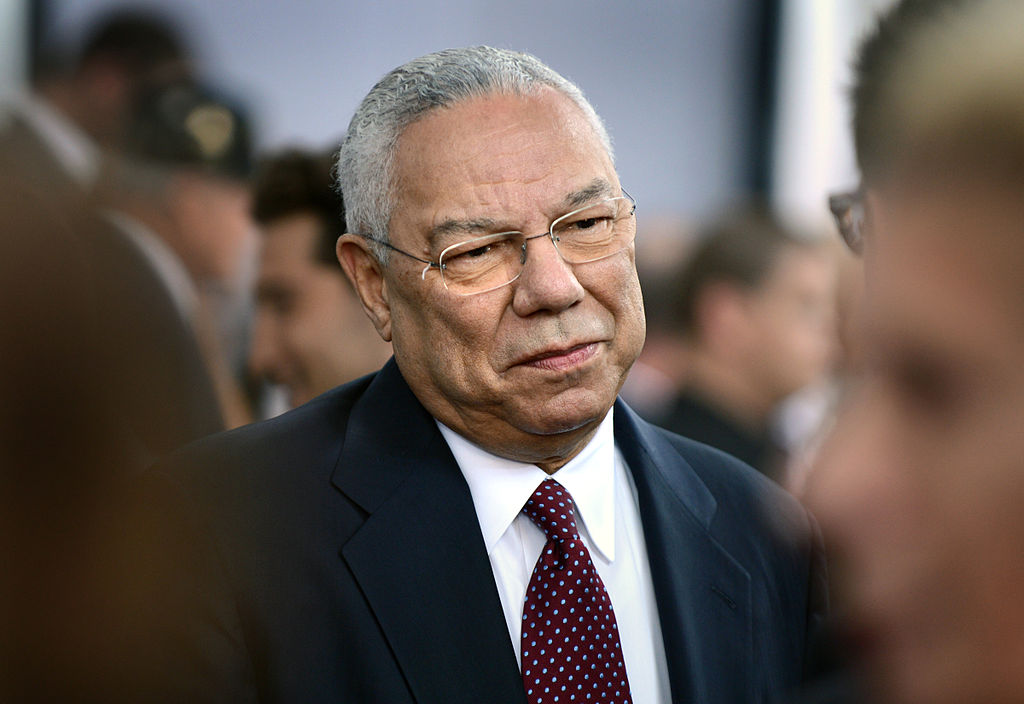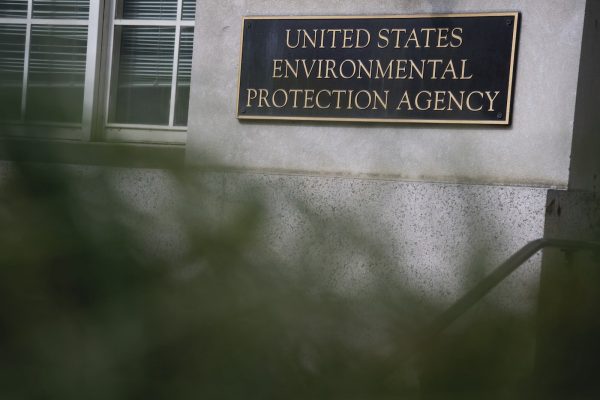When Colin Powell went before the UN Security Council on February 5, 2003, to make the case that Iraq was hiding “weapons of mass destruction” from the world, some commentators recalled the Cuban Missile Crisis 40 years earlier. In October 1962 Adlai Stevenson, then U.S. ambassador to the UN, used the same forum to confront the Soviet ambassador with grainy black-and-white aerial pictures of Soviet missiles in Cuba. Before Stevenson’s presentation, John F. Kennedy had sent an emissary, former Secretary of State Dean Acheson, to Paris to win General de Gaulle’s support in the gathering crisis. When Acheson asked de Gaulle if he would like to see the aerial photos, de Gaulle demurred, saying, “A great nation like yours would not act if there were any doubt about the evidence.”
Evidence, trust, action. In this technocratic age, governments are often authorized to act on the basis of their ability, enhanced by technology and expertise, to credibly discern hidden risks or predict future crises—surges of inflation, incipient epidemics, and emerging terrorist plots, for example. And our confidence in everything from air-traffic control to the safety of products at the corner store is based on our assumption that regulatory men and women are constantly monitoring the infrastructure of society. This impartial expert oversight that we assume to be part of the machinery of government might be called, by analogy to the world of financial accounting, the auditing function of government. Most of us in advanced industrial societies do not pay much attention to the work of the auditors—people with degrees in statistics, systems engineering, public health, and so on—but we trust their competence and good faith every time we take an FDA-approved drug, buy publicly traded stocks, or believe a secretary of state’s speech about imminent foreign threats. In our society bureaucratic pyramids of auditors screen and collate expert judgments, passing them up to the top, where they are represented to the public by individuals such as the FDA commissioner, the CIA director, and the secretary of state, who function as spokespersons for the audit armies.
We lack the time and expertise to judge for ourselves whether a food contains the ingredients its label claims and whether these are safe, whether an airplane is safe to board, whether the fingerprints on a murder weapon really do match those of the accused, and so on. Our society, with its extraordinarily refined division of labor and expertise, can only continue to function because we are willing to delegate determinations about such matters to impartial auditors.
The federal government is by far the largest employer of these auditors in the United States. Some government auditors police the private sector—as does the FDA when it scrutinizes the claims of pharmaceutical companies and the FAA when it monitors airlines. But the government also audits itself: the Congressional Research Service helps the legislative branch keep an eye on the executive, and different executive agencies will sometimes audit the same activity. This is particularly the case with regard to intelligence, where the estimates of the CIA have traditionally been audited by smaller intelligence operations in, for example, the Department of Defense, the Department of Energy, and the State Department.
Colin Powell’s 2003 speech to the UN, packed full of carefully sifted yet erroneous factual claims, is a particularly dramatic example of a breakdown in the government’s auditing of intelligence information. It is of interest not only in its own right but also as an example of a more widespread and alarming phenomenon: the fraying of the audit function of government in the United States. If unchecked, this fraying threatens to undermine public confidence in our modern regulatory apparatus.
• • •
When Colin Powell sat in Adlai Stevenson’s chair 40 years after the Cuban Missile Crisis, skeptical allies wanted very much to see what evidence he would present of illicit Iraqi weapons, since it was apparent that the United States and the UN had different estimations of the Iraqi threat. Powell hoped to persuade the international community that there was a compelling case for war against Iraq despite the fact that, in the previous two months, more than 100 UN weapons inspectors had made 575 visits to 321 suspected weapons sites in Iraq and had found no significant stockpiles of weapons of mass destruction or evidence that they definitely still existed. After the invasion, the UN’s chief weapons inspector, Hans Blix, wrote in his memoir, Disarming Iraq, that he had often been skeptical of American claims about Iraqi weapons in the months before Powell’s speech: his inspectors repeatedly traveled to alleged weapons sites on the basis of tips from U.S. intelligence, and repeatedly found nothing there. But without reliable documentary evidence from Saddam Hussein’s regime, Blix and his inspectors could not document that the chemical and biological weapons Saddam Hussein had once possessed, together with the remnants of his nuclear weapons program from the 1980s, had definitely been destroyed. As Donald Rumsfeld would so memorably put it, “absence of evidence is not evidence of absence.” As Powell walked into the UN building on February 5, many were wondering what the United States, with its billions of dollars’ worth of spies and satellites, might have found that the UN had missed.
In his speech Powell dryly but forcefully presented the case that Iraq had systematically violated the UN ban on its accumulation of chemical, biological, and nuclear weapons. Powell claimed that Iraq now possessed mobile bioweapons labs; stockpiles of anthrax, VX, and other chemical agents; planes and unmanned aerial vehicles adapted to disperse anthrax; telltale decontamination vehicles at suspicious sites; and illicit weapons hidden in palm groves. He also claimed that aluminum tubes imported by Iraq were not, as the Iraqis claimed, for their rocket program but for centrifuges to enrich uranium for a nuclear weapon.
Powell’s speech was deliberately modest, sober, and reasonable. In other words, it was cast in the tone of an audit. “These are not assertions,” said Powell. “These are facts, corroborated by many sources, some of them sources of the intelligence services of other countries.” Eschewing the rhetoric of international confrontation in favor of grim empiricism, Powell sounded less like a politician inciting war against an enemy than an epidemiologist stating the sad and incontestable facts about the etiology of a disease. The following day The New York Times editorialized, “Mr. Powell’s presentation was all the more convincing because he dispensed with apocalyptic invocations of a struggle of good and evil and focused on shaping a sober, factual case.” Powell’s rhetorical efficacy was amplified by his own public image, carefully cultivated over many years, as (in Newsweek’s words) “the most respected man in public life by virtue of his cautious, moderate, sober, winning, bridge-spanning persona.” Indeed, on the eve of his speech, a Gallup poll found that 63 percent of Americans trusted Powell more than President Bush on Iraq policy and only 24 percent trusted President Bush more.
In his speech Colin Powell encouraged his audience to doubt the ability of UN weapons inspectors, obstructed by Saddam Hussein’s minions, to find what was hidden. “Remember,” he said, “that in 1991 the inspectors searched Iraq’s primary nuclear-weapons facilities for the first time. And they found nothing to conclude that Iraq had a nuclear-weapons program. But, based on defector information, in May of 1991 Saddam Hussein’s lie was exposed. In truth, Saddam Hussein had a massive clandestine nuclear-weapons program.” Powell told the world to put its trust in the satellite images, electronic intercepts, and defector testimony produced by the American apparatus of global surveillance and espionage rather than in the multilateral teams of merely human expert witnesses and investigators assembled by the UN.
Powell’s speech was embellished with material evidence from the secret world of America’s intelligence auditors: tape-recorded intercepts of Iraqi military personnel opaquely discussing “forbidden ammo” and satellite images of Iraqi sites before visits by UN weapons inspectors. Powell described these satellite images as “hard for the average person to interpret, hard for me. The painstaking work of photo analysis takes experts with years and years of experience, poring for hours and hours over light tables.” Powell also showed images of forbidden weapons—video footage of a Mirage jet fighter adapted to carry biological weapons, naturalistic drawings of mobile bioweapons trailers, and an image of a drone ready to spray germs from the sky. Most significantly, Powell drew on one defector’s eyewitness account and three defectors’ corroborating accounts to persuade his audience of the reality of Iraqi biological weapons: “Let me take you inside that intelligence file and share with you what we know from eyewitness accounts. We have firsthand descriptions of biological-weapons factories on wheels and on rails . . . The source was an eyewitness, an Iraqi chemical engineer who . . . actually was present during biological-agent production runs.”
Colin Powell’s speech was almost universally well received within the United States. One poll suggested that 71 percent of Americans who had watched Powell’s speech thought he had made a convincing case for going to war. The editorialists and columnists were also impressed. Their encomiums are worth quoting at length given the condemnations that would so soon follow, after America was unable to find any significant illicit weapons in a conquered Iraq.
Mary McGrory wrote in The Washington Post, “I don’t know how the United Nations felt about Colin Powell’s “J’accuse” speech against Saddam Hussein. I can only say that he persuaded me, and I was as tough as France to convince.”
Jim Hoagland, also in The Washington Post, wrote, “To continue to say that the Bush administration has not made its case, you must now believe that Colin Powell lied in the most serious statement he will ever make, or was taken in by manufactured evidence. I don’t believe that. Today, neither should you.”
Nicholas Kristof wrote in The New York Times, “President Bush and Colin Powell have adroitly shown that Iraq is hiding weapons, that Saddam Hussein is a lying scoundrel and that Iraqi officials should be less chatty on the telephone.”
The Chicago Sun-Times was perhaps the most succinct: “Those around the world who demanded proof must now be satisfied, or else admit that no satisfaction is possible for them.”
• • •
Colin Powell’s speech became the object of intense scrutiny once American military and intelligence personnel, following the U.S. invasion of Iraq, proved no more able to find illicit Iraqi weapons than the UN inspectors who preceded them. Powell’s testimony to the UN was investigated by the Senate Intelligence Committee, a presidential commission, and the media outlets that had before been so approving. Some of these investigations revealed that, in assembling his speech, Powell had ignored the advice of his own department’s Bureau of Intelligence and Research, which had concluded that there was no reliable evidence for many of the claims he intended to make.
In the end, only one allegation about illicit Iraqi weapons in Powell’s speech was proved correct, and it concerned a relatively minor breach of the restrictions imposed on Iraq after the 1991 Gulf War: Iraq had missiles that exceeded the UN’s 93-mile limit. While Powell had claimed that Iraq had anthrax and between 100 and 500 tons of chemical weapons, after the invasion no significant chemical or biological weapons were found; nor was there any evidence of a continuing clandestine nuclear-weapons program, and the consensus now is that the aluminum tubes alleged by Powell to be for uranium enrichment were indeed, as the Iraqis had claimed, for their rocket program. (The tubes in question were 81 mm—the diameter of Iraq’s rockets and the wrong size for centrifuges—and had the word “rocket” engraved on them.) The alleged mobile bioweapons labs now appear to have been, as the Iraqis claimed, facilities to make hydrogen for weather balloons. The suspected decontamination trucks now appear to have been regular fire trucks, and we now know that Powell’s intelligence advisers in the State Department counseled him before his speech that this was probably the case. No fighters or unmanned drones modified to spray bioweapons agents were ever found, and it is now clear that the video footage of a French Mirage fighter adapted for biological warfare was taken before the 1991 Gulf War, during which the plane was destroyed.
As troubling as the inaccuracy of many of Powell’s claims is what has come to light about the process by which these claims found their way into his speech—a process in which, in the words of The Washington Post (summarizing the presidential commission’s conclusions), intelligence institutions became “a kind of echo chamber in which plausible hypotheses hardened into firm assertions of fact, eventually becoming immune to evidence.” We know, for example, that Powell disregarded objections made by his in-house intelligence experts to ten factual claims in his speech—in particular the claim that Saddam Hussein was importing aluminum tubes to enrich uranium. British intelligence and most of the leading experts in the U.S. nuclear-weapons laboratories also objected to the claim about the aluminum tubes, pointing out that their size, shape, and material were wrong for use in centrifuges but matched perfectly the Italian-made Medusa rocket the Iraqis were known to have been copying. As one expert told The Washington Post, “It may be technically possible that the tubes could be used to enrich uranium . . . But you’d have to believe that Iraq deliberately ordered the wrong stock and intended to spend a great deal of time and money reworking each piece.” When uranium-enrichment experts from the Department of Energy’s Oak Ridge Laboratory contested the conclusion that the aluminum tubes were for centrifuges, the CIA set up its own panel of experts and vetoed the suggestion by the Joint Atomic Energy Intelligence Committee that it adjudicate the dispute.
But the most seriously flawed evidence Powell cited was the eyewitness testimony that Saddam Hussein had mobile biowarfare labs. The principal source for this claim was someone aptly nicknamed “Curveball.” We now know that Curveball was the relative of a senior aide to Ahmed Chalabi, the exiled Iraqi leader who had been lobbying the United States to invade Iraq for many years, though U.S. intelligence did not know this when Powell appeared before the UN. Curveball had presented himself to German intelligence, which passed along his testimony to U.S. intelligence but refused to identify Curveball or make him available to the CIA for interrogation. But a foreign intelligence service had warned the CIA that it had “doubts about Curveball’s reliability” and that his behavior was “typical of individuals we would normally assess as fabricators.” By 2002, when Tyler Drumheller, the head of the CIA’s Europe division, asked a German colleague for access to Curveball, he was told, “Don’t even ask to see him because he’s a fabricator and he’s crazy.” Intelligence analysts today believe that Curveball—a man who, in the words of The New York Times, had been reported to have “problems with drinking, reliability and truthfulness”—offered fabricated accounts intended to strengthen the case for an American invasion of Iraq. Although Powell claimed topresent “facts corroborated by many sources,” he presented Curveball’s eyewitness account without knowing that its reliability was suspect. Two other witnesses Powell cited as corroborating the story actually said they had heard of mobile bioweapons labs but had never seen them. A fourth witness was deemed so unreliable by the Defense Intelligence Agency that in 2002 the agency had (according to a Los Angeles Times article) “posted a ‘fabrication notice’ on a classified computer network to warn other U.S. intelligence agencies that the defector had lied.” In the words of David Kay, President George W. Bush’s choice to lead the search for illicit weapons in Iraq after the invasion, “If Powell had said to the Security Council: ‘It’s one source, we never actually talked to him, and we don’t know his name’ . . . I think people would have laughed us out of court.”
• • •
Advanced industrial societies require that the invisible machinery of audit and adjudication keep humming along smoothly in all its marvelous complexity. The most obvious example is the external auditing of publicly traded companies’ financial records, which affords investors the basic confidence that makes the stock market—a fantastically complex system for distributing private capital to industry—possible. But there are other kinds of auditing as well: the auditing of clinical trials by pharmaceutical companies, medical researchers, and the FDA that allows the sick and their caregivers to pick treatments with confidence; the auditing of foreign governments’ statements of their military capabilities by domestic intelligence agencies to enable our government to plan and respond proportionately; and the auditing of police evidence by scientific laboratories that sustains our faith in fair judicial processes.
In each of these areas we have recently seen major scandals parallel to the scandal of Colin Powell’s speech. In the stock market, it turns out that the accounting firm Arthur Andersen and bankers from Merrill Lynch and Citigroup were complicit in Enron’s criminal misstatement of its accounts. This failure in auditing cost many small investors their life savings, as well as destroying Arthur Andersen and Enron. In the pharmaceutical market, recent revelations about the painkiller Vioxx and the dangers of antidepressant use by teenagers show not only that pharmaceutical companies have concealed clinical-trial data that may reflect badly on their products but that medical researchers and the FDA are becoming as much a part of the apparatus of pharmaceutical promotion as of impartial audit. This failure in auditing cost some patients their lives. Meanwhile, in Houston, several hundred criminal cases may be retried because the city’s crime lab has been shown to have fabricated evidence in at least four cases. Here a failure in auditing may have cost several hundred citizens their freedom.
One could multiply these with still more examples that have recently come to light:
• In spring 2005 a House committee released e-mail messages suggesting that government employees charged with verifying the safety of the government’s plans to bury high-level nuclear waste at Yucca Mountain tampered with evidence of their research methods in order to appear to have followed quality standards more closely. “This is as good as it’s going to get. If they need more proof, I will be happy to make up more stuff,” said one particularly brazen message.
• At roughly the same time, the press reported that Jonathan Fishbein, a clinical research specialist at the National Institutes of Health, was fired because he raised concerns about patient safety in AIDS trials being run by the institutes.
• In March 2005 it was reported that the government had withheld from international auditors evidence that a Halliburton subsidiary overcharged on its Iraqi reconstruction work by $108 million.
• In June 2005 The New York Times reported that a former oil company lobbyist, now working for the White House, had been allowed to edit and weaken the language of reports documenting global climate change that had been written by scientists in the government’s Climate Change Science Program.
• On the heels of recent revelations that pharmaceutical companies are soliciting medical professors to pose as the authors of articles ghostwritten by the pharmaceutical companies themselves, The New York Times reported in July 2005 that the EPA is paying public-relations firms to ghostwrite pieces for agency scientists for publication in peer-reviewed journals.
• Finally there are the revelations that television stations have aired government video “news reports” as their own work and that media pundits such as Armstrong Williams have accepted undisclosed payments from the government to promote its programs. Just as, in his presentation to the UN, Colin Powell tacked effortlessly between actual photographs of Iraqi weapons (albeit weapons that no longer existed) and artists’ renderings of such weapons, both presented as evidence that Iraq possessed illicit weapons, so our media coverage is sometimes a mélange of actual reporting and fake news—press releases disguised as independent reporting and propaganda disguised as punditry.
We are confronted, then, with a receding horizon of trust. Of course, Americans have been deceived before by government leaders—most notably in the years of the Vietnam War and Watergate. But the crisis of confidence today is potentially more serious than the crisis of confidence in the late 1960s and early 1970s because of increasing evidence that we are being failed by a wide swath of institutions and not just by the White House, the Pentagon, and the State Department. This is reflected in recent opinion polls. For example, Gallup opinion polls show that public confidence in Congress has fallen from 42 percent in 1973 to 22 percent today, while confidence in our banking system has fallen from 60 percent in 1979 to 49 percent today. A report by the nonpartisan Council for Excellence in Government found, meanwhile, that aggregate public confidence in ten institutions including medicine, education, the executive branch, the Supreme Court, and Congress had fallen from 55 percent in 1966 to 28 percent today.
There is an infrastructure of trust in our society that draws its power in part from its invisibility. When something goes badly wrong, the infrastructure is suddenly brought partly out of shadow, and our confidence in it may falter. If citizens are again to trust their government, their media, and their corporations, we must rebuild audit institutions that are being eviscerated by the power of politics and market.
The Founding Fathers imagined a society well regulated by a system of checks and balances. They envisaged these checks and balances in terms of three branches of government: the executive, the legislative, and the judicial. In our much more complex, technocratic, post-industrial society, one the Founders could scarcely have imagined, one in which the executive has unparalleled resources and we necessarily delegate decision-making power to armies of regulators and experts, the old system of checks and balances is like a hairnet held up to a hurricane. Today audit institutions fill this role, tempering the power of both the executive branch and corporations. If the story of Colin Powell and the hallucinatory case for war in Iraq is a parable of audit culture gone bad, the moral is that we need to strengthen and revitalize it if democracy is to survive.








